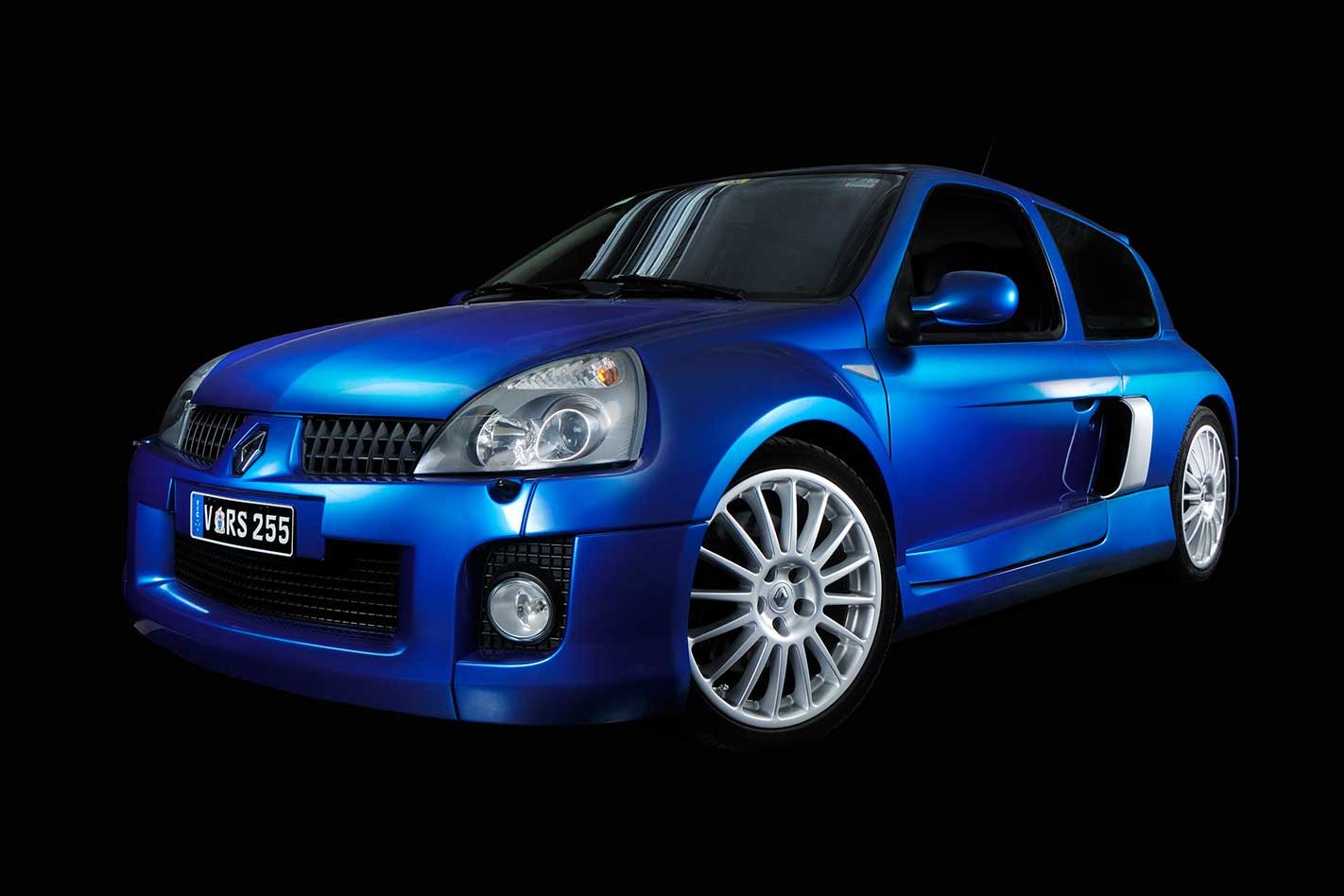There is powerful magic about the Renault Clio V6. Not the sort of magic that comes from being simply wonderful to drive. Or loaded with standard equipment. Or even being a super-collectible piece of machinery. (In fact, the little Renault is not even all of those things.) Nope, the Clio V6 is – corny though it may sound – simply righteous.
This feature was originally published in a previous MOTOR issue
If you get cars – and I mean REALLY GET cars – then the Clio’s combination of bare-faced cheek and bloody-minded purity cannot be ignored.
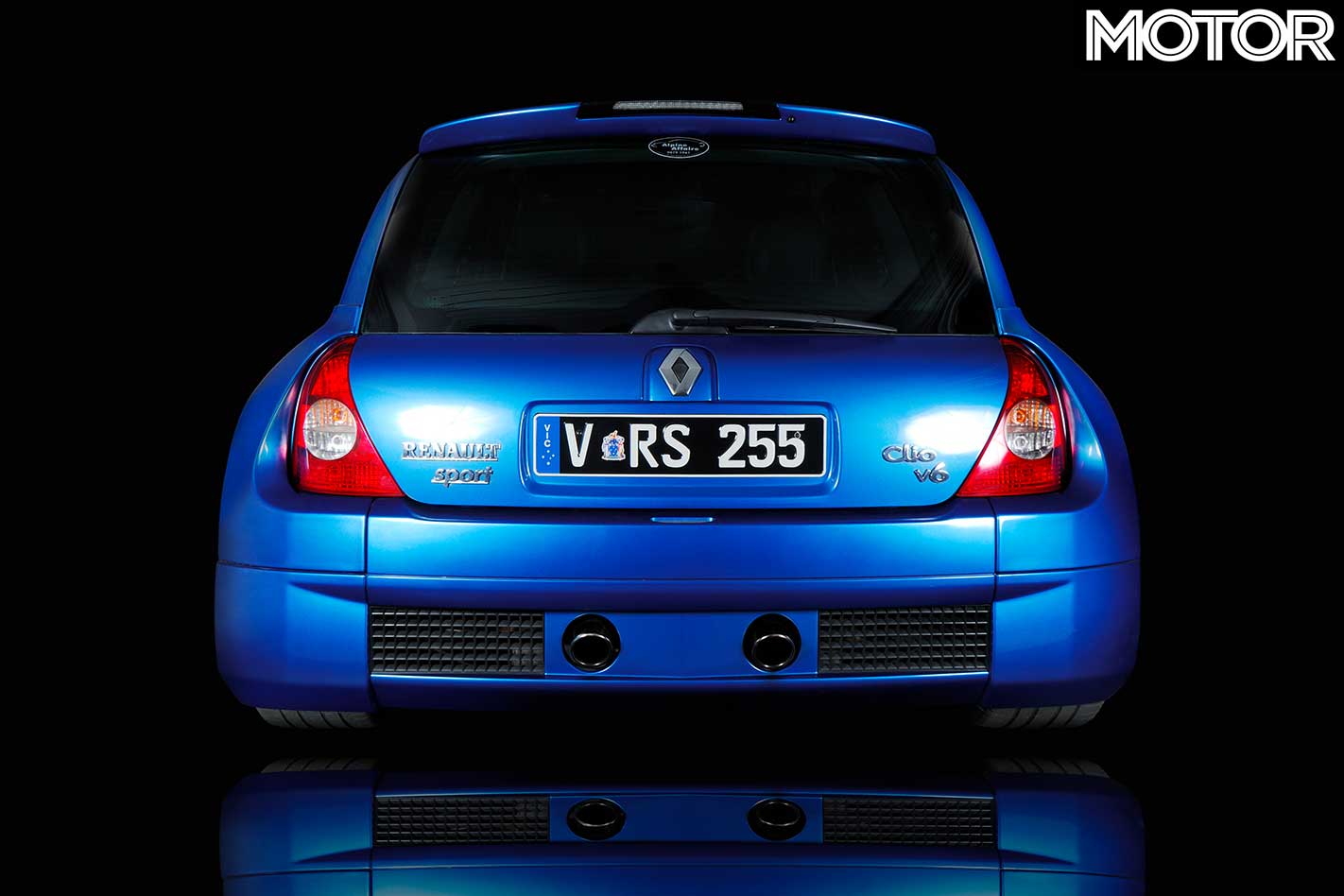
Sporty versions of the Clio have been around for a long time now. In fact, there was even a Clio Williams as far back as 1993 (although the Williams F1 team had precisely nothing to do with the thing) and factory souped-up Clios have been around as long as the model itself (the first Clio hit Europe in 1990).
But in every case, the modifications were based around the car’s original basic layout; that is, a front-wheel-drive platform with a four-cylinder engine mounted east-west. But in 2001, that changed in a big way.
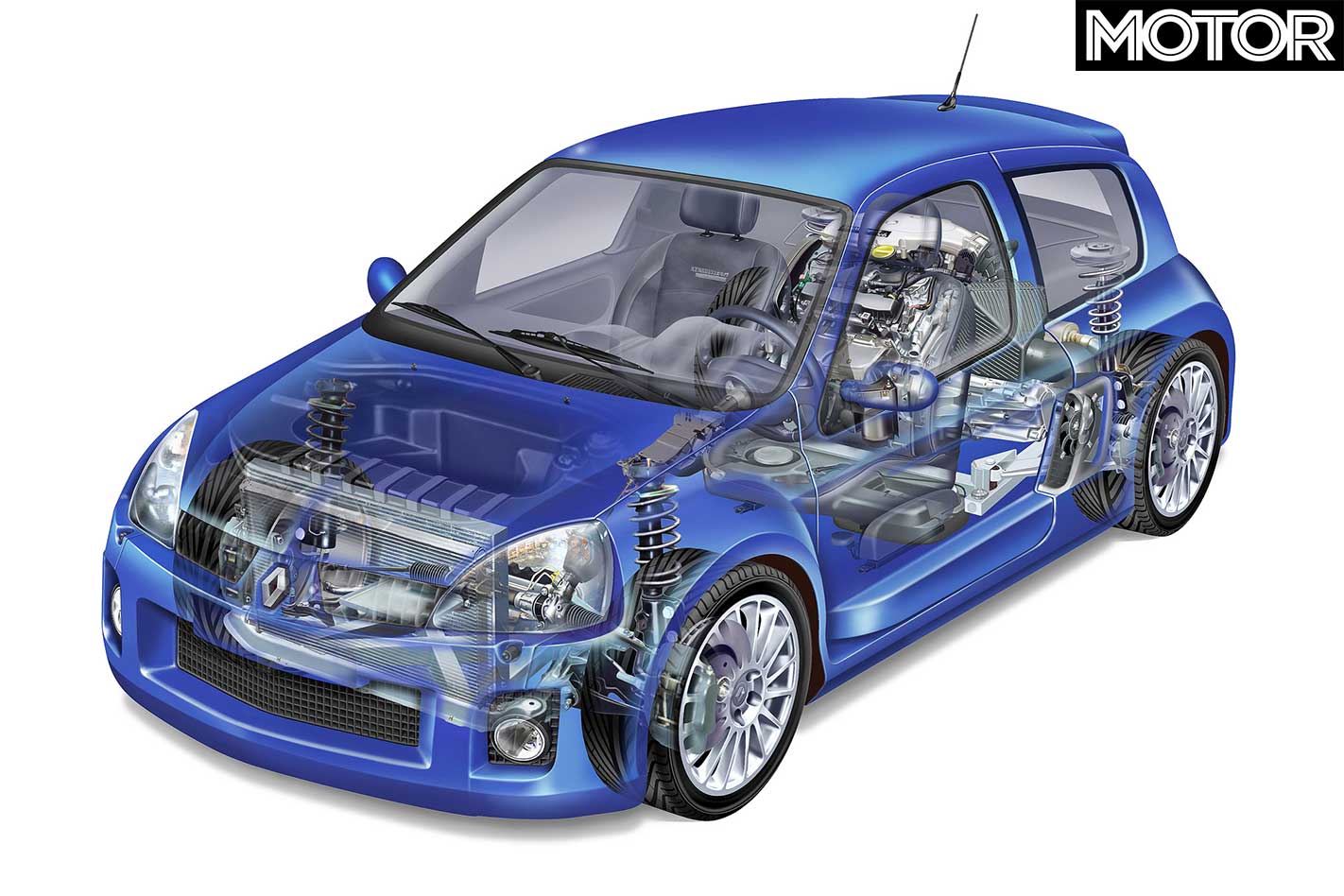
Out went the four-banger and in went a V6 borrowed from the Renault Laguna big-car. Okay, so plenty of car-makers have plonked big engines in small cares to make hot hatches, but in this case, the fitment of the V6 was much more involved.
See, rather than bolt the three-litre vee under the Clio’s bonnet, the grand plan called for the motor to be mid-mounted. Add a six-speed transaxle and it was just a natural progression to turn the thing from front to rear-wheel-drive. See what I mean by ‘righteous’?
You might also recognise the concept from the Renault 5 Turbo of two decades earlier and there’s a striking similarity between the two both visually and philosophically.
Renault Sport was involved in the Clio project but due to the fact that the thing just didn’t fit with normal Clio production, the V6 was actually built in Sweden by TWR.
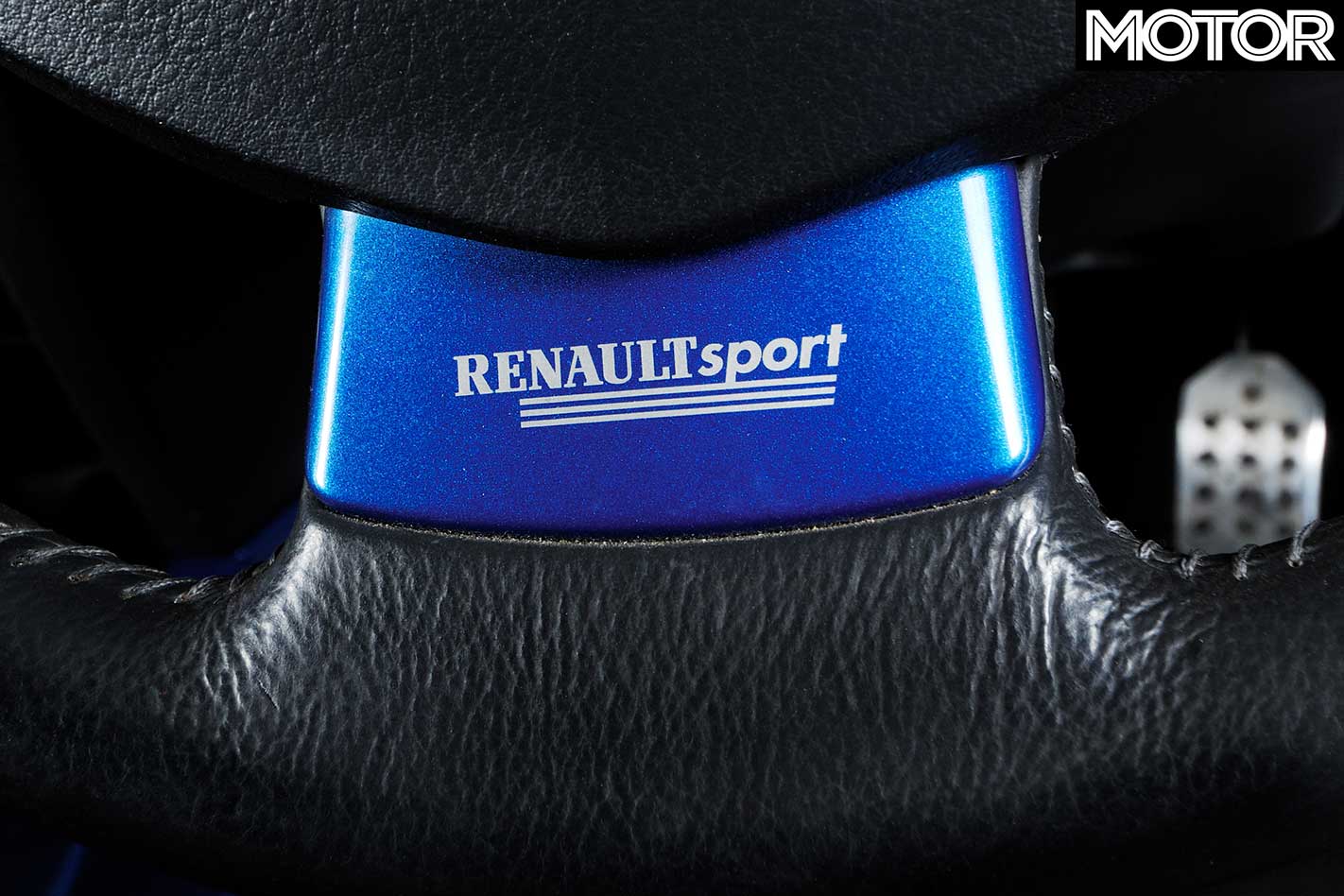
The Walkinshaw operation was much better placed to tackle the enormous amount of work involved in this switcheroo and it really did involve a lot of cutting of the stock Clio bodyshell. In fact, the change was so extensive that a lot of strength had to be put back into the shell, and that resulted in a kerb weight a full 300kg higher than a Clio Sport 172 (which was the hottest ‘conventional’ Clio at the time).
You also lost the rear seat although there was a small luggage space up front where the motor once lived (there was also an even smaller space under the hatch, behind the engine) and despite being based on a Clio, fuel consumption was around the 12 litres per 100km mark.
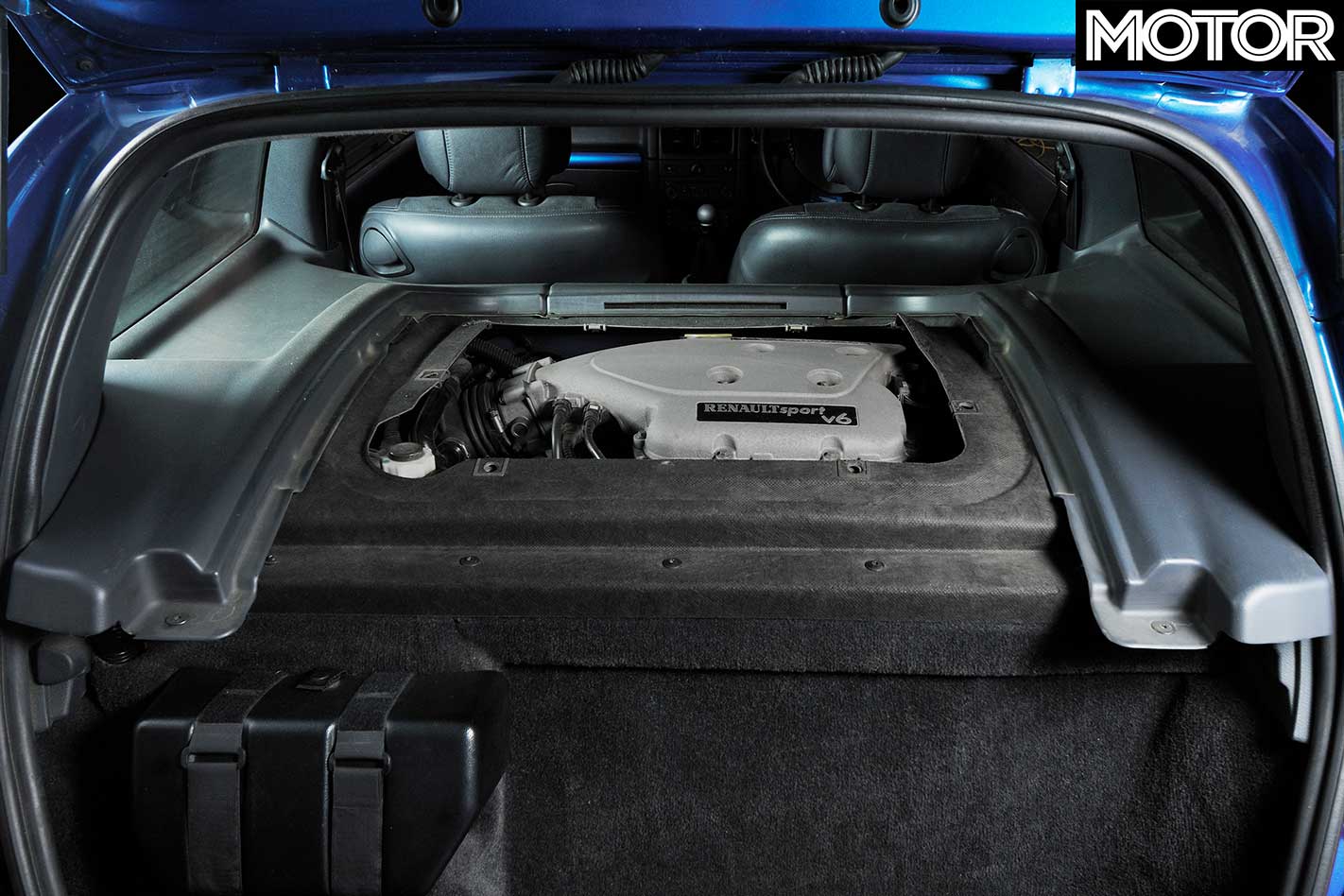
The wide bodywork at the rear made the car more difficult to park and the super wide rear track, combined with the racier steering set-up, meant the turning circle was gargantuan. Then again, anybody who bought a Clio V6 as a shopping car deserved everything they got.
But for all that it was purer than the driven snow, the driving reality didn’t quite add up. This was down to two things. Firstly, that the 169kW of the lightly tuned Laguna V6 didn’t, once you took into account the extra 300kg it was lugging around) amount to startling acceleration.
Secondly, the ‘other’ performance Clio, the 172 Cup was so good, it was almost as quick as the big fella. And when testing at the time showed the V6 could scramble to 100km/h in about 6.3 seconds and the Clio Cup only took an extra half a second or so to do the same, the pragmatists started to consider the V6 as a bit superfluous.
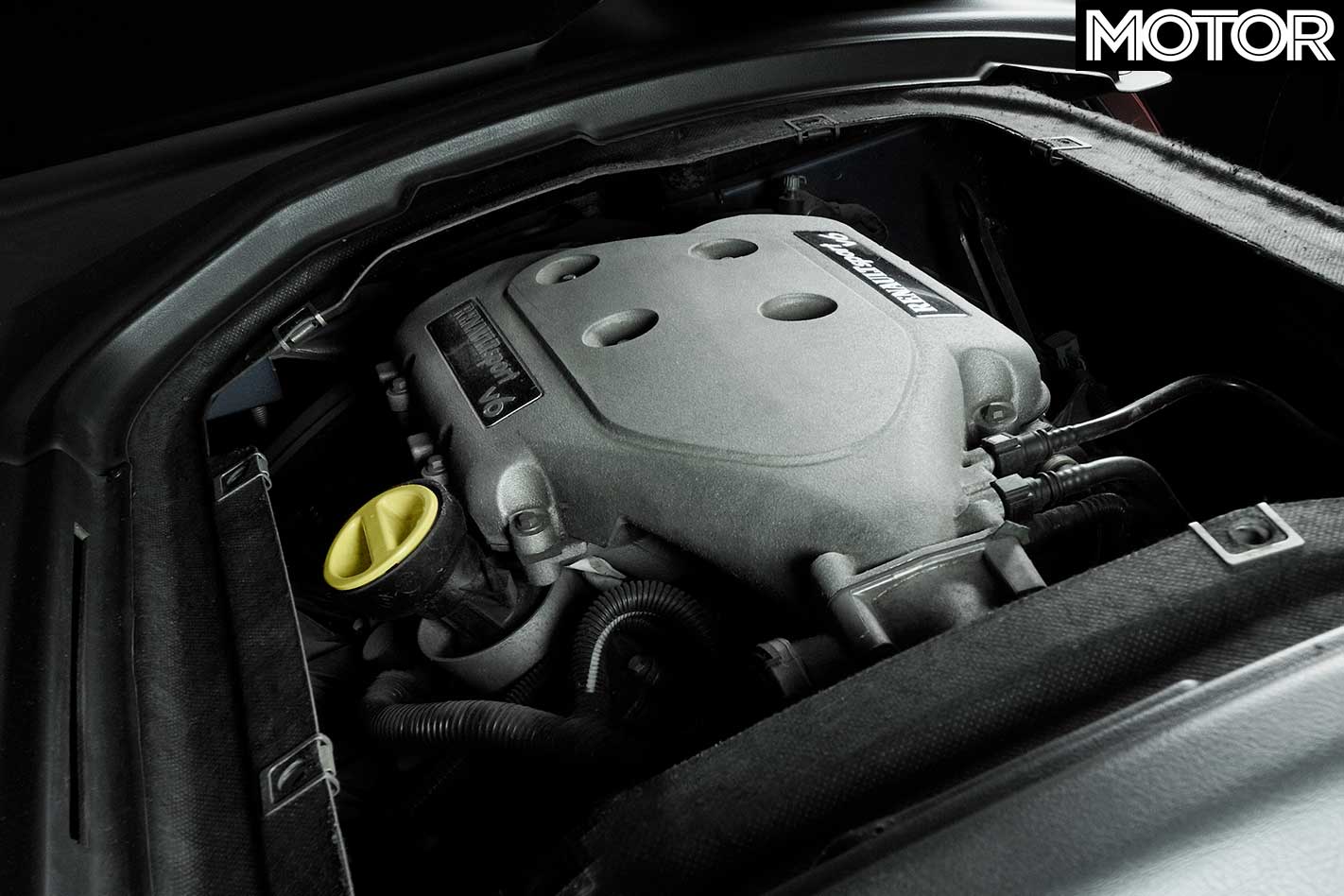
What should have been a completely neutral chassis also showed up a little understeer at the limit, too. All things considered, the Clio V6 just didn’t have enough mongrel in it to totally compensate for the fact that it was an expensive two-seater rather than the practical, almost-as-fast four-seater it owed its existence to.
Renault’s response was of the classic variety; for 2003 and with a facelift to give the car the appearance of the latest Clio (at the front anyway) it simply upped the engine ante and stuck more horsepower into the thing.
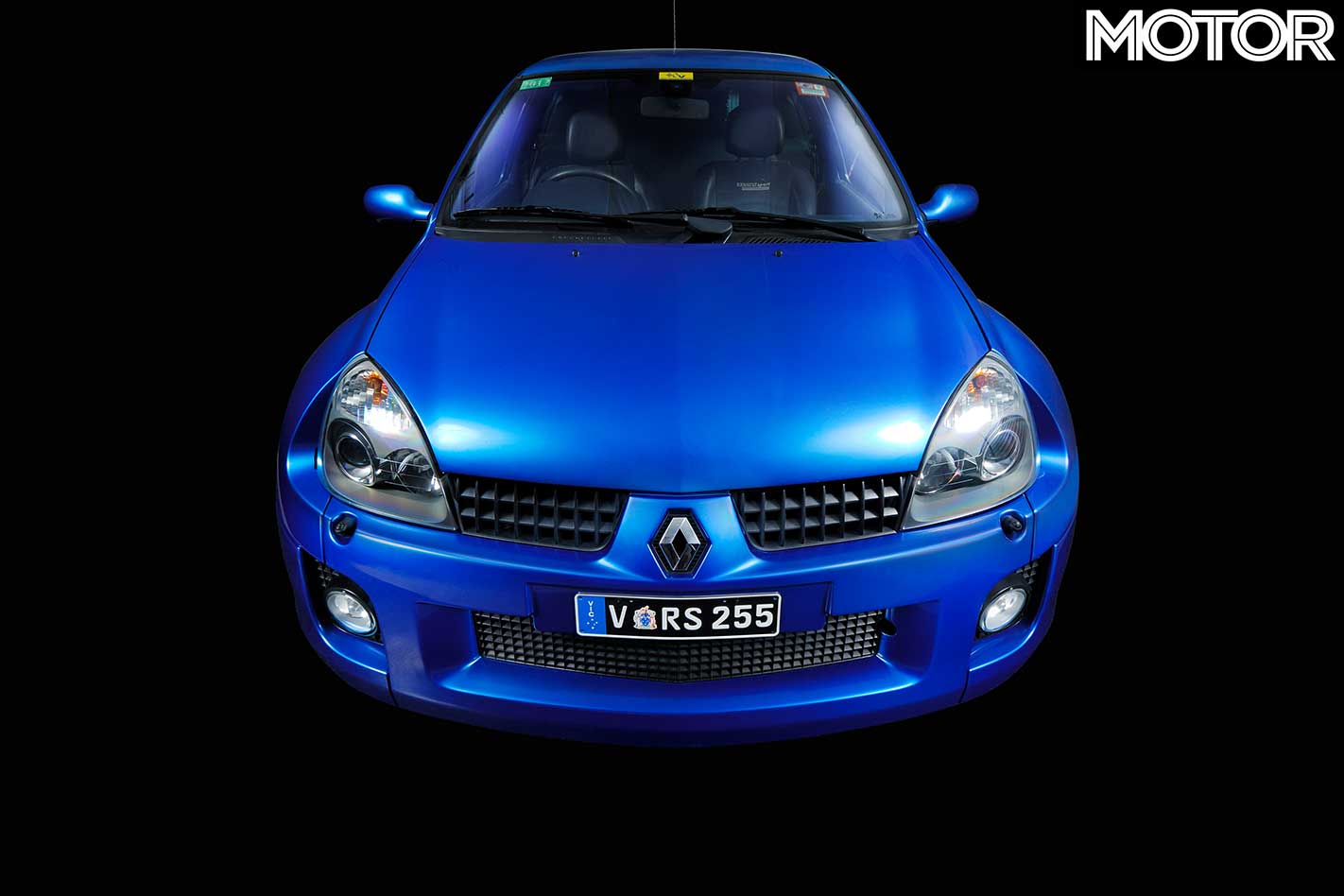
Now the three-litre engine made 188kW but, if anything, the understeer was made worse by the thing carrying a bigger stick. Oh, and it was even heavier, too, but the extra urge finally got its 0-100 time under six seconds. Just.
It was also at this time that production moved from Sweden to the spiritual home of fast Renaults, Renault Sport in Dieppe, France. But that couldn’t save the concept, either, and with the public convinced that the V6 was an overpriced understatement, the model was dropped from the line-up in 2005.
In 2012, of course, that judgment is a harsh one and completely ignored the fact that here was, more or less, a Group B rally car for the road. Okay, it was years behind the Renault 5 Turbo (and Group B rallying itself) and that raises another of the V6’s problems: It was never a homologation car for racing purposes.
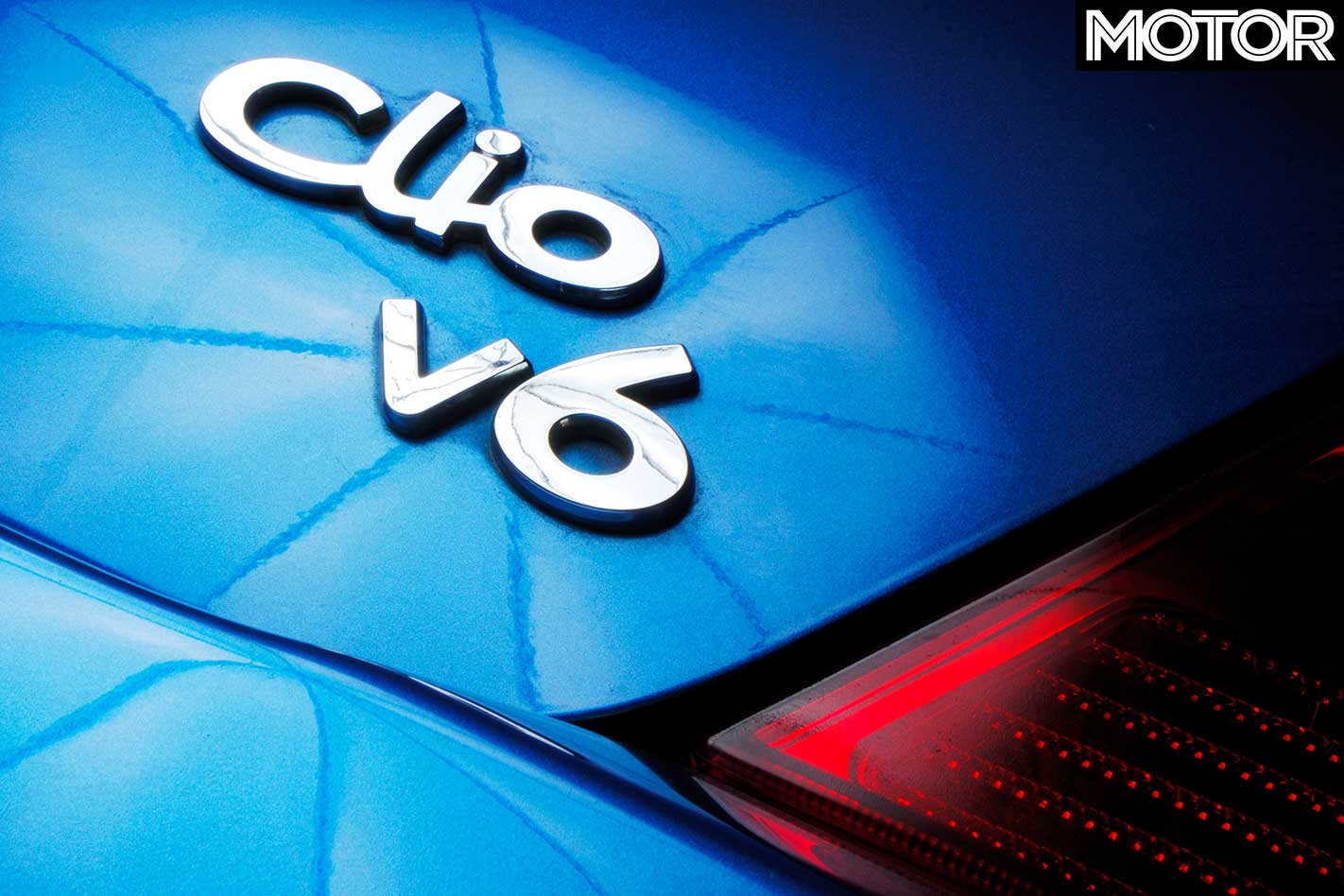
It’s a bit like Aussie muscle cars: The Bathurst heroes of the 1960s and early 70s are seen as the real deal. Why? Because they were the cars that ACTUALLY raced at Bathurst according to the homologation rules of the day. What you bought in the showroom was what Brock, Moffat, Grice and Harvey bounced off each other on the weekends. Later model stuff just can’t match that.
The same – sort of – thing applies to the Clio V6, but for our money, none of that alters that fact that it’s still special. Very special. Powerful magic indeed.
Buying one
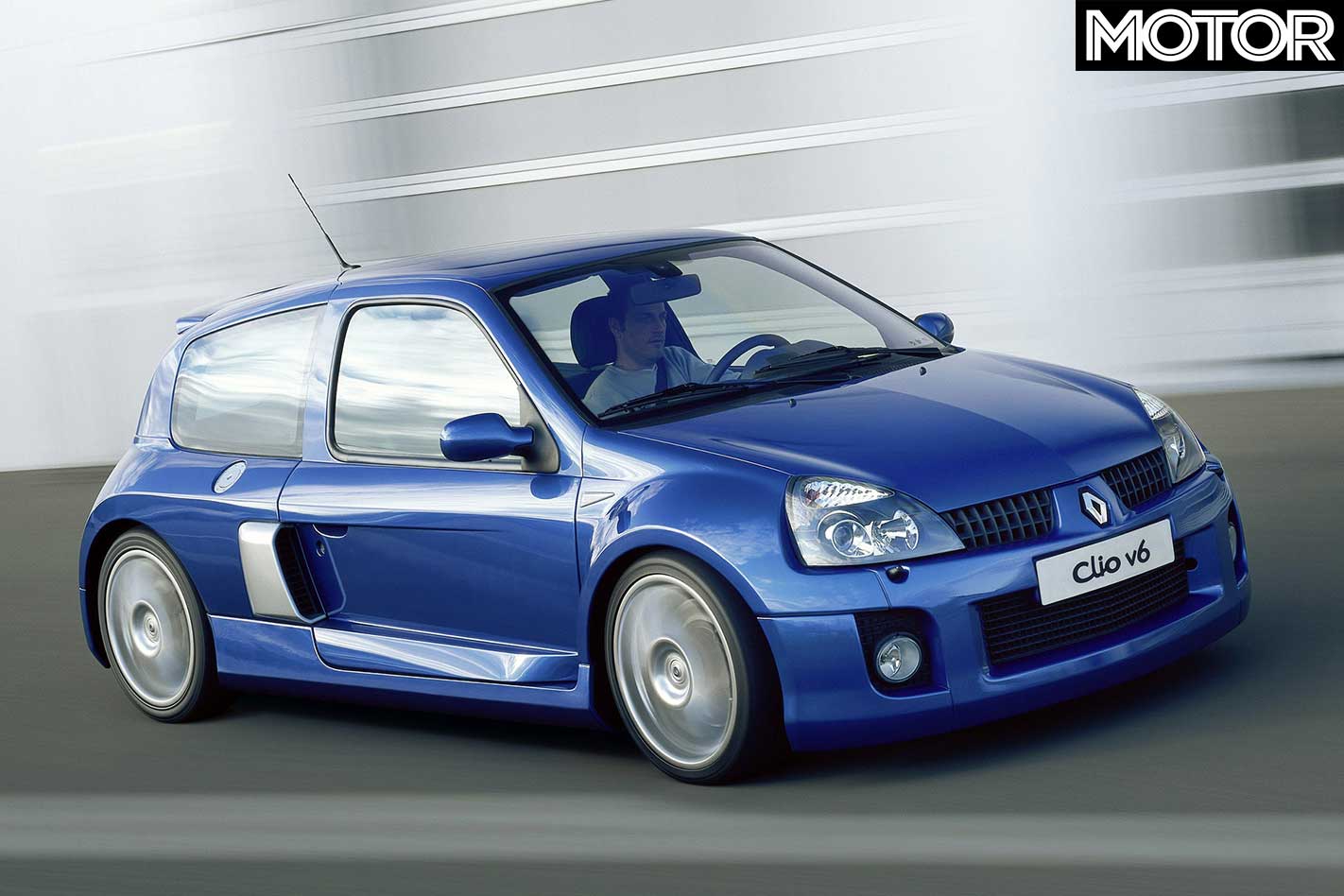
Never imported into Australia by Renault, your only hope of finding one already here is to look for a private import. This, however, could take a large chunk of the rest of your life.
So that means, you’re better off importing your own. Again, though, that throws up a few problems, not the least of which is that the Clio V6 is not old enough to be registered as a left-hand-drive car in most Aussie States.
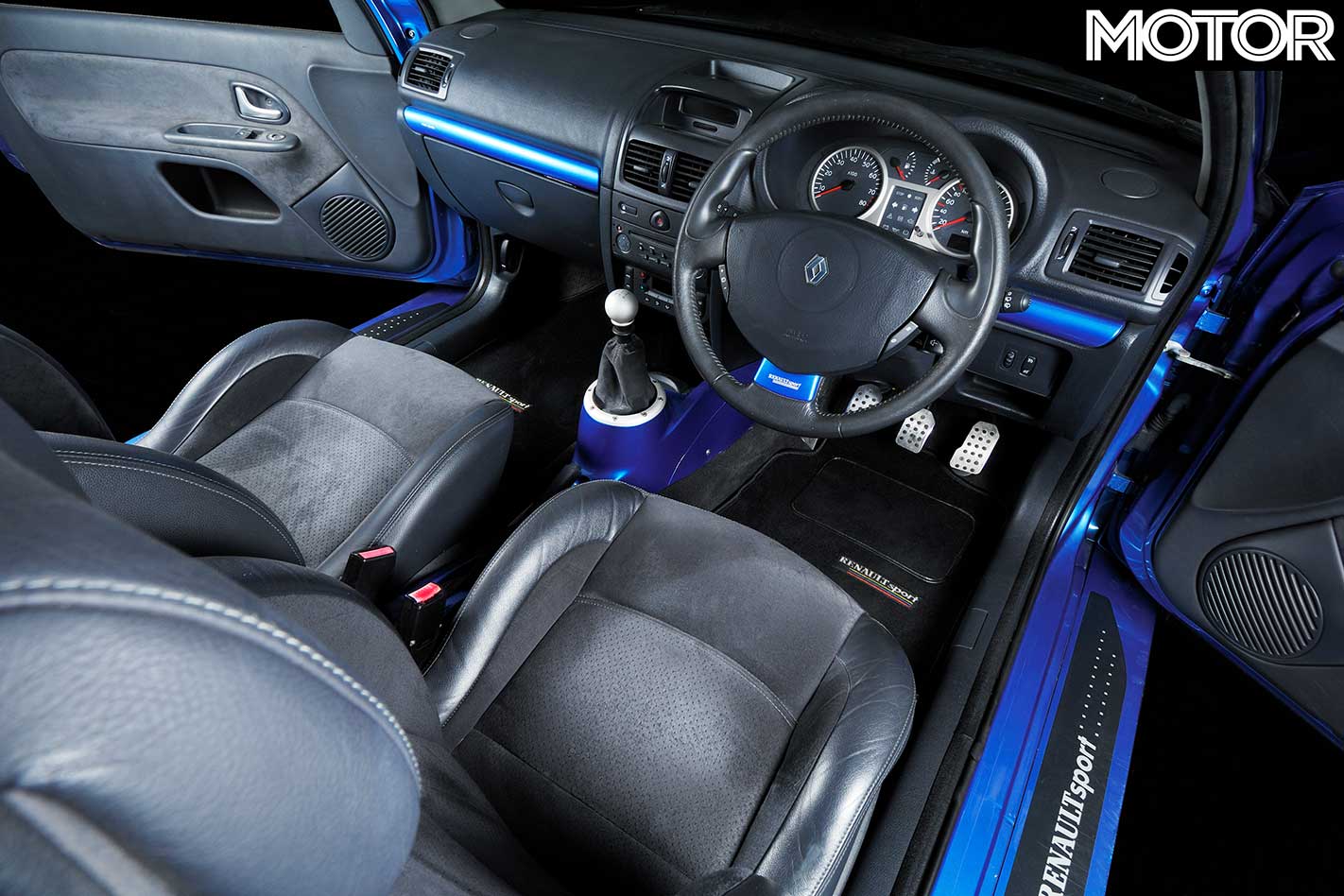
Shop around, though, and you will discover that despite being a small-volume car, Renault did, in fact, bother to make the Clio V6 in right-hand-drive. This, then, is the go, since it will be a lot simpler than buying a left-hooker and converting it.
The car was popular in Britain (which also happens to be a right-hand-drive market…Yay for the commonwealth) so Pommy websites are probably the best place to start.
Five before (vee-) Six
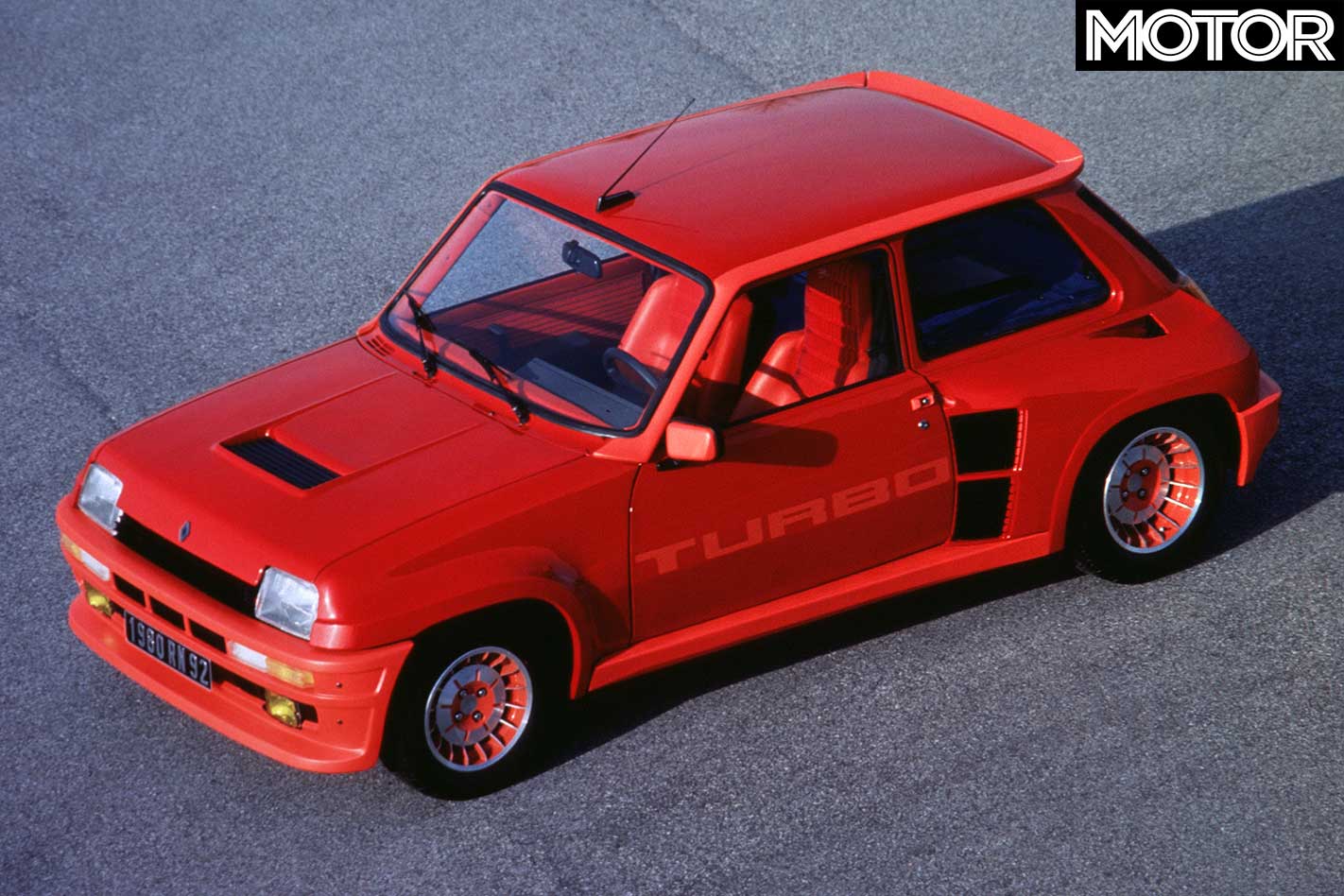
If the Clio V6 has any debt of gratitude to pay, then it’s to the Renault 5 Turbo that it owes it. The little R5 Turbo was Renault’s homologation car for the early 1980s, an era which eventually led to Group B in 1982 and gave us some of the most ferocious (and dangerous) rally cars ever to send gravel flying.
Two versions of the Renault 5 were made, the first variant making up the homologation and road-car build and the second version being road cars only. Either version will get to 100 in about 6.6 seconds and that’s from just 1.4 litres (and a dirty big snail, of course). In its final `Maxi’ competition form, the pundits reckoned the little 1.4 was putting out north of 250kW.
Eventually, the four-wheel-drive Group B cars outclassed the rear-drive Renault, but not before it established itself as a giant-killer by winning the Monte Carlo Rally on its first attempt in 1981 with Jean Ragnotti at the helm.

